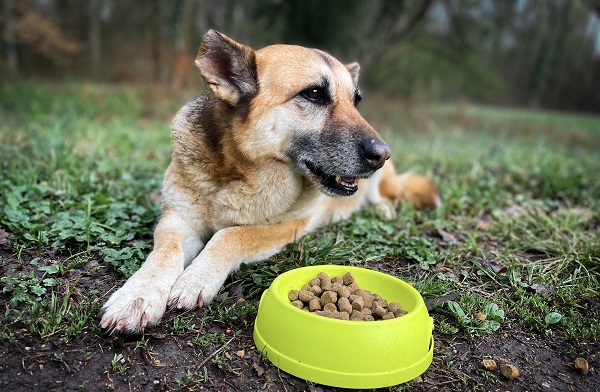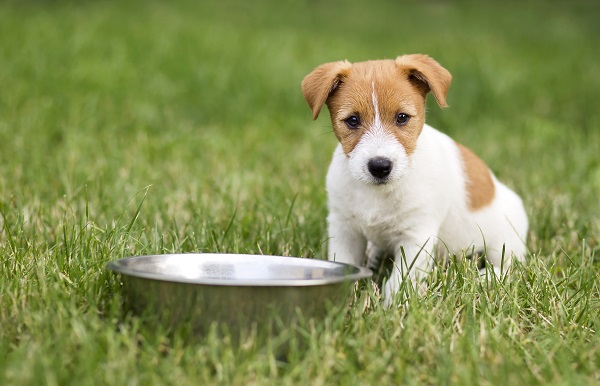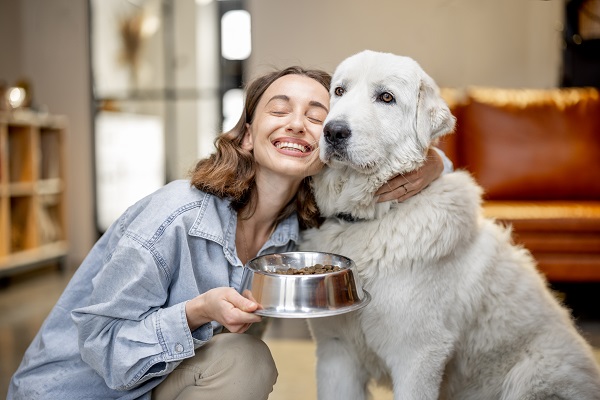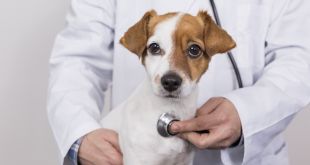Has your dog stopped eating even though he used to empty the food bowl quickly earlier? Now there are many reasons why a dog would not want to eat.
These causes could be anything ranging from misbehavior, or severe health issues. However, regardless of why your dog is not eating, if they are doing that, you would need to act to correct the problem.
Loss of appetite in dogs is also known as anorexia or inappetence. However, anorexia in dogs is different from how it happens in humans.
Dog anorexia could either be complete or partial. If they are eating some kinds of food but at an insufficient amount, it is called partial anorexia. Whatever the type, anorexia can be detrimental to its well-being and health.
When they are not eating anything at all, it is called complete dog anorexia.
Reasons or Medical conditions
Several medical conditions can cause your dog to lose their appetite. They include, but are not limited to, the following:
- stomach upset
- issues with teeth, tongue, or gums
- poisoning
- tumors
- allergies
- parasites
- depression
- neurological and autoimmune diseases
- infection
- complications with internal organs such as the heart, liver, kidney, and lungs
- pain
- recent vaccination
In such cases, please contact the vet as soon as you can.
Why Is My Dog Not Eating His Food
Environmental and behavioral reasons
When it comes to behavioral reasons for loss of appetite in dogs, there could be a lot of reasons, separation anxiety being a major one. It could be that your dog is used to getting plenty of table scraps and treats.
Perhaps they like to eat alone, or they do so when someone else is in the room. They are used to being fed by hand. The most prominent environmental reasons are traveling or a recent move.
It may also be that they are not eating because of the absence of another pet or a family member.
Issues such as weather changes, changes in the regular feeding schedule, and recent stressful events become significant reasons behind the condition.
At times, they may also refuse to eat from a new bowl. You need to understand the factors that lead to all their habits and environmental changes.
Dental diseases
Your dog might not want to eat anything when something in its mouth causes pain. In such cases, you must get them checked for the following:
- loose or broken tooth
- severe gingivitis
- oral tumor
Apart from these, you have conditions such as tooth root abscess – a medical condition underneath the gum line that thus cannot be seen or detected easily.
Issues with the food
In some cases, the food itself could be the issue. It happens when the food is rendered in such a condition:
- old
- expired
- stale
- spoiled
Some dog breeds, such as Labrador Retrievers, a happy-go-lucky bunch in every sense of the word, might eat anything they see. However, other dog breeds, such as Yorkshire Terriers, are a bit particular in these cases.
If your dog has been on the same diet for some time and has always eaten it, look at the expiry date of the same on the can or the bag you are serving it from.
Medicines
Have you recently started feeding your dog any medicine? In that case, such a regimen or medication could upset their stomachs. Doctors say you might not feel like eating when treated for a disease.
Some medicines might make your dog nauseous, and they could also cause stomach aches from antibiotics. The most prominent culprits in these cases are NSAIDs (non-steroidal anti-inflammatory drugs) such as Rimadyl and treatments such as chemotherapy.
A simple case of lack of thirst and hunger
If you have had a breed like Labrador Retriever, you would say that this is simply impossible. However, there are certain occasions when your dog might not feel thirsty or hungry – it could be something as simple as that.
In that case, they should show signs within 24 hours of not wanting to eat the first time. It may not be a sign of any sickness, so you should not get worried. In case of thirst, they should drink at least once within 12 to 14 hours.
Tips and Tricks That Can Help Your Dog Increase Their Appetite
Supportive care
If your dog has not eaten in a few days, you must get them on subcutaneous or intravenous therapy to provide necessary electrolytes and keep them hydrated. You may need a feeding tube or resort to syringe feeding in case your dog has not eaten anything for the past two to three days.
You might have to administer appetite stimulants such as cyproheptadine or mirtazapine so that you can boost their appetite.
Treating underlying issues
Once your doctor has identified why your dog is not eating, they will start treating the same properly. It could include oral medicines, surgery, dental procedures, or a combination of any of these.
What to do if they drink water but do not eat it?
If this is the case, there is a good chance that they may be suffering from dental pain or some other kind of pain in their mouths. Thus, they are finding it hard to chew the kibble.
In such cases, you must take them to the veterinarian, who might suggest and conduct some lab tests exams such as feces, urine, and blood samples. Through these procedures, the doctor could detect the underlying issues and get to the root of the problem.
Steps that you can take when your dog is not eating
For starters, you can start cutting back on those treats. It would be best if you fed them regularly, and it must be at least twice a day. You can also make mealtime fun for them by playing with food-dispensing toys.
Never force them to eat
You may wonder why your dog would not eat since they reject their food. Even in such cases, you must not force them to eat. You should know that dogs can go over 24 hours without eating and not have any dire repercussions as a result of that.
However, since not eating could indicate an underlying illness, you should contact the vet or doctor in these cases. There could be some issues with the food, such as contamination or spoiling.
Conclusion
If your dog is not eating because of causes other than medical issues and allergies, there are specific steps you can take to get them to eat. At times, you must try making the food more fragrant. It can do the trick and whet their appetite.
So, can you try to heat wet food, put some water in their bowl, or mix wet food with dry food? A lot of dogs like to have tuna water and low-sodium broth as well. If you feel they are being dramatic, consider applying the placebo method to get their attention toward the food to eat.
FAQs
Que: What is the solution if a dog is not eating?
Ans: You can make the food more appealing for them by pouring any of the following on it:
- chicken broth
- beef broth
- clam juice
- tuna water
If they are eating dry food, you can pour warm water to make it softer. If your dog does not like dry food, feed them wet food – the opposite always works! You could try hand-feeding them too.
Que: How can I get my dog’s appetite back?
Ans: You can take specific steps at home to get your dog to eat again. For starters, if you feed them canned food, you can warm it before feeding your dog. Because when food smells good, it becomes more alluring to eat too. You can add something that they find yummy to their food.
Que: Can dogs recover from not eating?
Ans: Indeed, dogs are known to survive for long periods without eating, but there is a high risk that this would cause irreversible damage to their tissues and organs. It can kill them as well! If your dog has not eaten anything for two days, you must talk to the doctor without fail. The vet would suggest ways to feed your dog.

 DogExpress
DogExpress

























 in Chandigarh, India.
in Chandigarh, India. 
